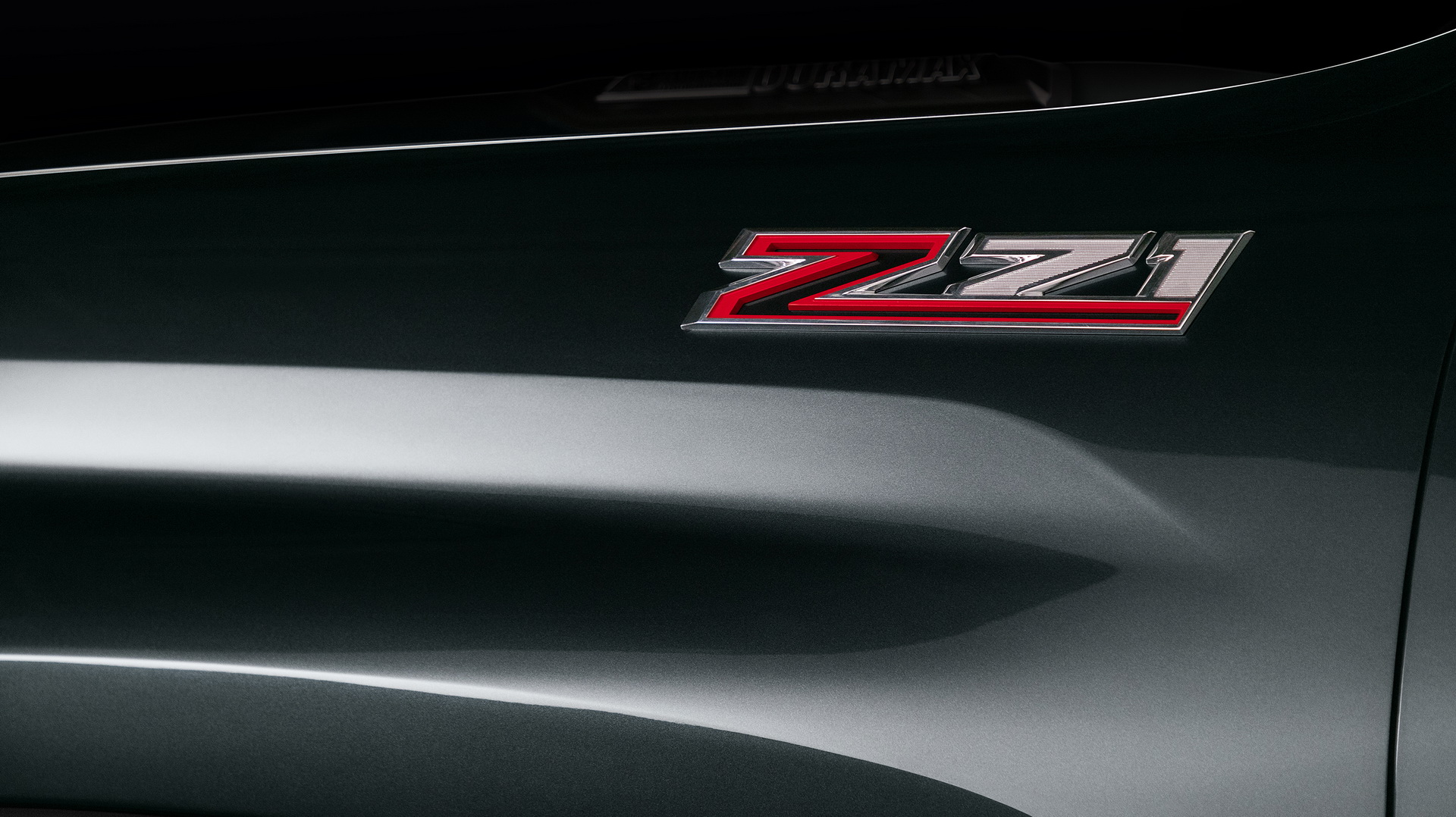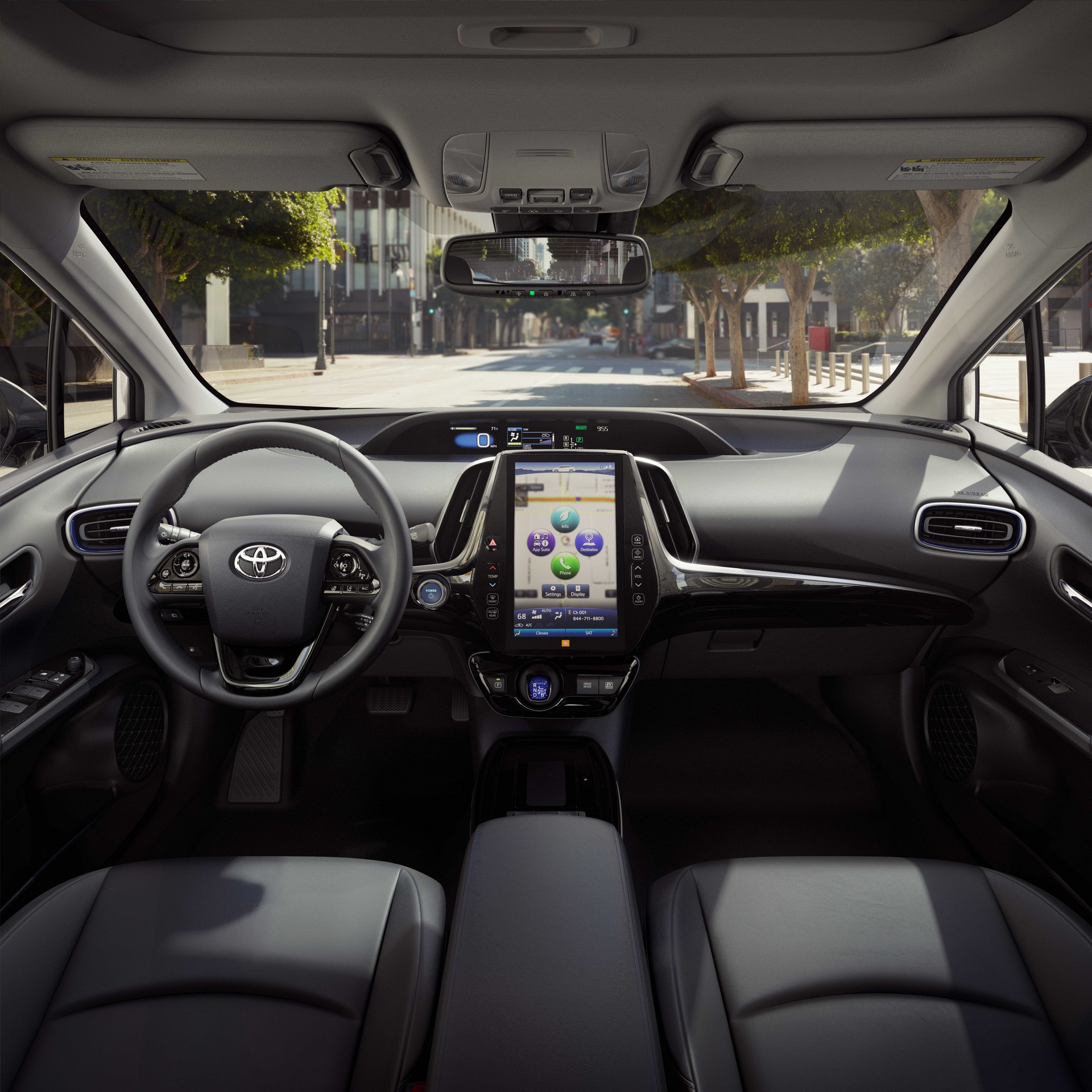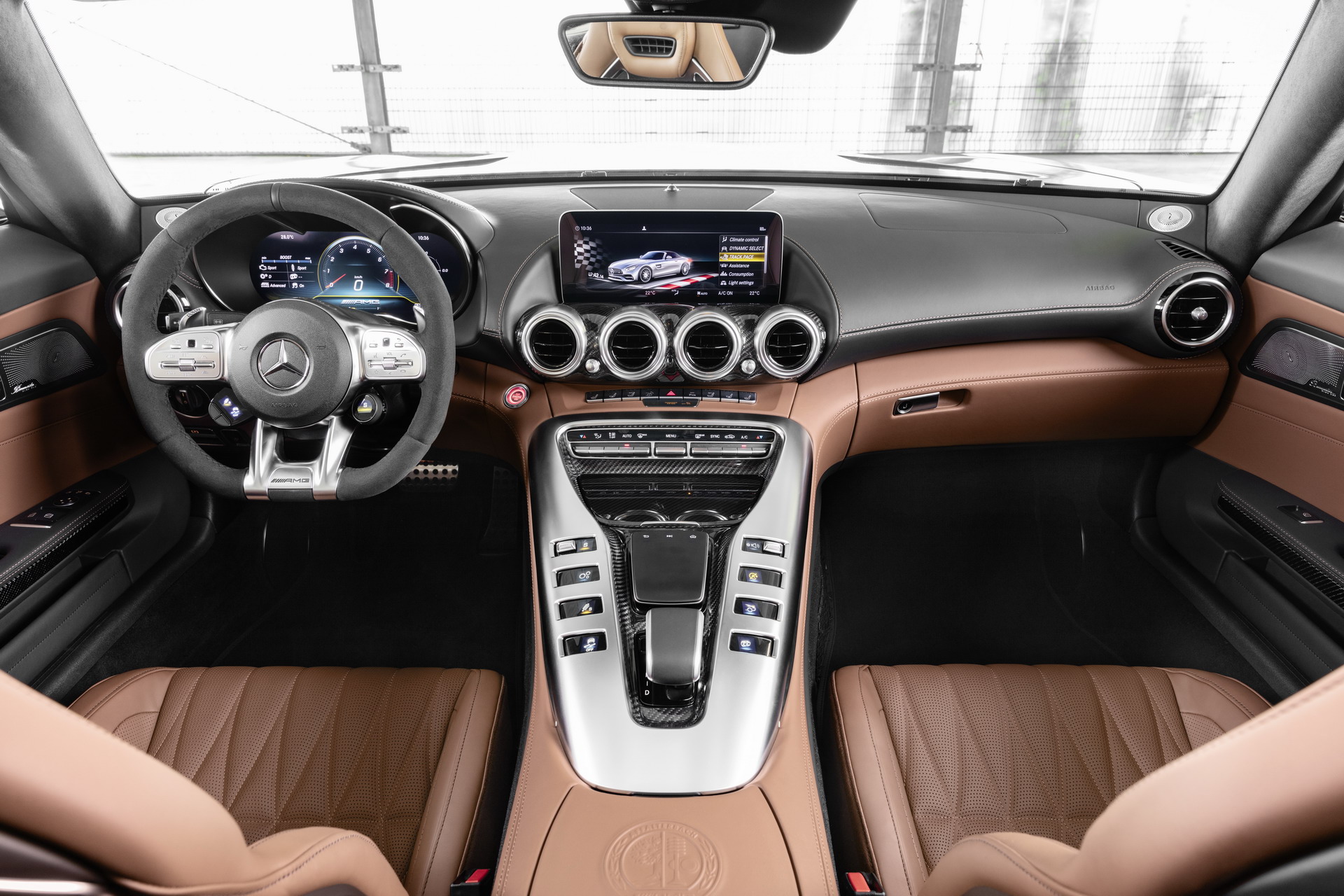A new family of Mercedes-AMG GT models has just been introduced for the 2020 model year at the Los Angeles Auto Show, including the limited-edition AMG GT R Pro.
Starting with the new AMG GT R Pro, it has been designed with a particular focus on racetrack performance and has come to life thanks to the automaker’s experience with the AMG GT3 and GT4 racing cars. There are four key areas where the Pro stands out from other models; through its suspension, lightweight construction, aerodynamics, and appearance.
Mercedes-AMG has developed a set of new coilovers for the GT R Pro where the compression and rebound can be easily adjusted through a dedicated dial on the damper. The car also utilizes an adjustable carbon fiber torsion bar up front and an adjustable, hollow steel bar at the rear. Additionally, the AMG GT R Pro comes outfitted with Uniball spherical bearings not just on the rear lower wishbones like the ‘normal’ AMG GT R but also on the upper wishbones as well. The sports car also features a carbon fiber shear panel on the underbody that promises to improve rigidity and add stability.
Elsewhere, the 2020 Mercedes-AMG GT R Pro comes outfitted with ceramic composite brakes as standard and wears a set of lightweight AMG Performance five-spoke forged wheels offered exclusively in titanium grey.
Aerodynamics also separate the AMG GT R Pro from other models. Up front, there is a new apron that incorporates carbon fiber canards to improve stability at higher speeds. Mercedes-AMG has also developed air slots in the front fenders to reduce front-axle lift while at the rear, there is a small carbon fiber aero element on each wheel arch.
Rounding out the upgrades enjoyed by the car are standard-fit Carbon Packages I and II that include new carbon detailing across various elements, including the wing mirrors, rear spoiler, and rear diffuser. With AMG GT3 racing driver Maro Engel behind the wheel, an AMG GT R Pro prototype recently lapped the Nurburgring in 7:04.632.
Like the ‘standard’ AMG GT R, the Pro features a twin-turbo 4.0-liter V8 engine with 577 hp and 516 lb-ft of torque between 1900 rpm and 5500 rpm.
Viewed from the outside, the new family of AMG GT sports cars take some inspiration from the 4-door coupe, particularly with the inclusion of different LED headlights. The rear diffuser is also different while the tailpipe outlet has been modified to reflect the shape of the AMG GT 4-door coupe. With this in mind, base AMG GT models now have two round tailpipes while the quicker AMG GT C has trapezoidal shaped twin tailpipes. Meanwhile, the AMG GT R retains its large central tailpipe and continues to be flanked by two further tailpipes hidden in the diffuser.
Customers of the 2020 Mercedes-AMG GT also have newly-designed 10-double-spoked forged wheels in titanium gray at their disposal. Changes have also been made to the sports car’s interior.
Most significantly, a fully digital, 12.3-inch instrument cluster now comes standard alongside a 10.25-inch multimedia display on the center console. The instrument cluster offers a number of different display styles, including ‘Supersport’ which borrows cues from motorsports, such as a prompt for when the driver should change gears. Mercedes-AMG has also fitted new buttons across the center console which include colored displays.
Also updated is the steering wheel. From 2020, the AMG GT gets the same AMG performance steering wheel as the AMG GT 4-door coupe and updated C63. This new wheel has a flat-bottom section and is wrapped in black nappa leather/microfiber or in all-microfiber depending on spec. The wheel also includes galvanized paddle shifters as well as integrated Touch Control buttons that control functions of the digital dash and multimedia displays. A round controller is also found on the wheel. By using this controller, drivers can change between driving modes.

Perhaps more important than all these updates, however, is a new AMG DYNAMICS driving mode. This new mode optimizes the transverse dynamics to offer higher lateral acceleration, better traction, and load change reactions. The system is able to anticipate vehicle behavior based on the driver’s actions and a series of sensors. Mercedes says this system provides the driver with a very authentic driving feel “with high cornering dynamics and optimum traction as well as high stability and predictable handling.”
The 2020 model year also welcomes the AMG Track Pack This system is a standard part of the COMAND infotainment system and when active on a circuit, detects and records more than 80 vehicle-specific sets of data ten times per second. The system can then be used by the driver to analyze and improve their driving skills.
Power for the 2020 Mercedes-AMG sits at 469bhp and 465 lb-ft of torque while the AMG GT C has 550 hp and 502 lb-ft of torque. Pricing and availability details have yet to be announced.
carscoops
A new family of Mercedes-AMG GT models has just been introduced for the 2020 model year at the Los Angeles Auto Show, including the limited-...








































